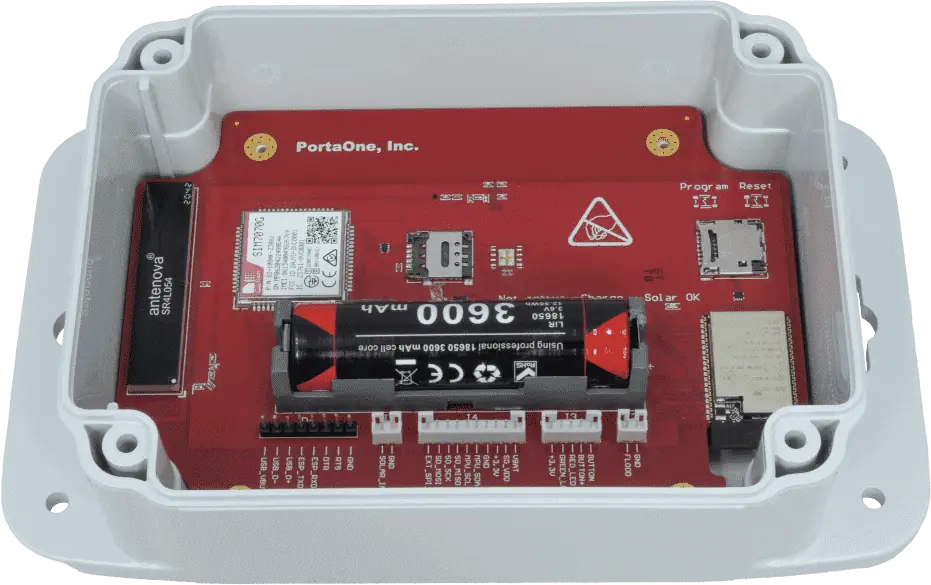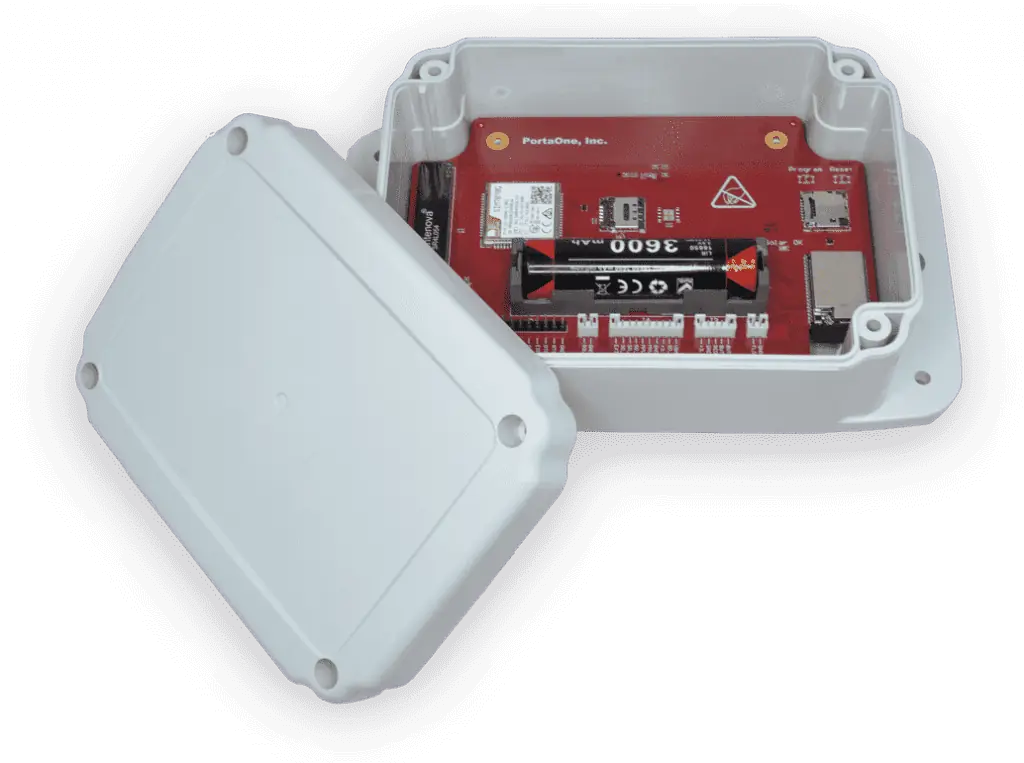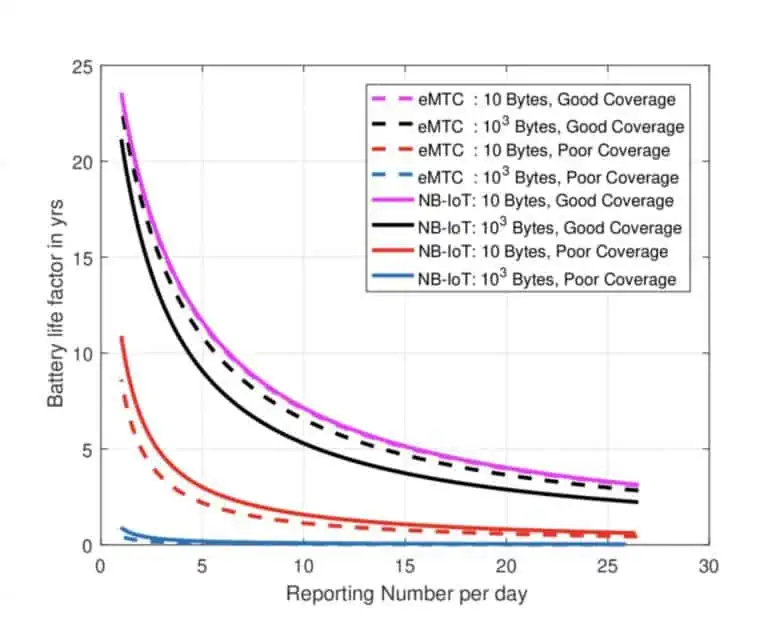
When you’re testing an MVP, you don’t have time to wait for months for your first batch of devices to be manufactured and shipped
And, these days, the shipping hold-ups and microchip shortages are making it worse! On top of that, if you discover an issue in the prototype, you’ll have to re-fabricate and create even more delays.


IoT Mill has all you need to launch a new IoT device in days:
It’s a fully assembled and tested device, with a ready-to-use communication stack and optimized for long battery life
IoT Mill is equipped with:
- GPS
- Thermometer
- Gyroscope
- Flood sensor
- Ability to add your custom sensor
It’s fully customizable, so you can:
- Connect custom sensors via Bluetooth
- Insert a SIM card to establish wireless connectivity
- Add your own code for sensor data extraction and processing
- Transmit data into a cloud data warehouse for analytics
A scalable IoT product from scratch
In 4 easy steps
Get an idea
Create your concept for an IoT product or device
Rapid deployment
Bring your new IoT product to real customers in a few weeks
Iterate
See what works and what needs to be improved right away, then repeat step 2
Launch
Integrate, collect, and process data
With our design and production experience, we can fast track a custom-made product that will meet all of your requirements and exceed your expectations.
What makes IoT Mill different?
Superior power efficiency
Up to 10 years on a single charge* thanks to highly efficient LTE and GNSS antennas, ultra-low-power components, and power control circuits for all peripheral devices.
Minimal coding
No need to deal with low-level OS or communication protocols – we’ve done that for you. All you need to do is write the code that extracts and processes the data your app needs.
Durability and connectivity
IP68 Enclosure, LTE-M, NB-IoT and GNSS antennas, LTE-M / NB-IoT / WiFi / Bluetooth LE, and connectivity to add more sensors.
Indefinite run time
Connecting the solar battery to the integrated MPPT solar charger controller enables indefinite run time for more power hungry applications.
Watch this video tutorial to learn how to get started with your IoT device.
Data sheet
- LTE-M / NB-IoT / WiFi / Bluetooth LE Connectivity
- GPS / Thermometer / MotionTracking device / Accelerometer / Flood sensor / IMU
- Ability to add own sensor via Bluetooth
- Nano-SIM card slot
- Over-the-air firmware updates
- FreeRTOS + SDK for C language
- IP68 Enclosure
- More details in PDF
How does it work?
Minimum coding effort to create your MVP!
Don’t waste precious time dealing with low-level OS or communication protocol peculiarities – our IoT Mill team has handled all of that. Just write a few pages of code (using C programming language) to:
Gather data
Fetch the sensor data your app needs (e.g., for vehicle tracking this could be GPS location and accelerometer reader)
Process it
Process the sensor data (e.g., compare with the last reading and do not send any data to the cloud if the vehicle position has not changed)
Send to the cloud
Send to your cloud warehouse via MQTT/HTTPS (e.g., submits vehicle location record to your Google Cloud IoT instance)
With our design and production experience, we can fast track a custom-made product that will meet all your requirements and exceed your expectations.
Case study: IoT garbage bin monitoring
Problem
Every year in British Columbia, around 950 black bears and 50 grizzlies are killed to protect the general public.
More bears are becoming accustomed to and reliant on garbage in BC, requiring their extermination. It’s a waste of life. It’s also expensive: the Ministry of Environment, Lands and Parks Conservation Officer Service spends about $1 million each year repairing bear damage to garbage facilities.
Solution
Installing IoT motion sensor on each garbage bin.
Allows advanced monitoring and messaging to owners and utility companies in case of bin overturn or unscheduled moves.

Benefits
City
- Monitoring if the garbage bin is placed outside for collection only during the collection time slot.
- Automatic warning messages may be pushed to home owner phones and
automatic fines may be issued for multiple violations. - Having real time information about overturned garbage bins while knowing if bin has been emptied or not.
- Automatic dispatch of cleaning teams.
- Providing statistical and location information for conservation officers.
Home Owner
- Receives a warning message if bin has been put out on the wrong day (for instance, due to schedule changes or weather).
- Receives a message once bins have been emptied for fast removal.
- Receives alerts for bear intrusions so owner can scare away the bear and clean the street.
Want to know how IoT Mill could help you make your own solutions a reality? Use the form below to contact our team and get all the details.
Ready to start your project using IoT Mill?
Send us your questions and we’ll be in touch! You’ll also get the full data sheet and updates about future product developments.
By clicking the button, you agree to our Privacy Policy
Reference to research on battery longevity
A typical case scenario for the use of NB-IoT in smart cities applications is described and analyzed in (El Soussi et. a., 2018). The scenario consists of NB-IoT devices placed in various parts of a city in heterogeneous environments with different network coverage conditions. These devices are used for parking management, traffic control, waste management, and many other day-to-day city management operations.

Battery life time under different reporting number, data lengths, and coverage scenarios for eMTC and NB-IoT.




